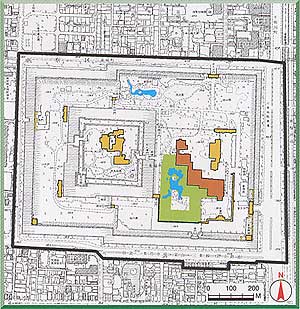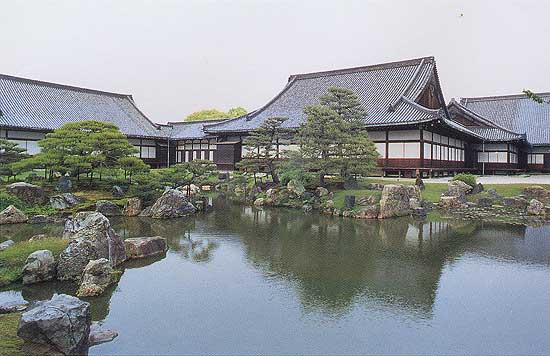| JAPANESE | |
| Q. Nijo-jo | |
| The position of the Tokugawa's political power in Kyoto, the Edo Period | |
| Establishment: The begining of the 17th century (1603) | |
| Nijo-jo was built by the Tokugawa shogunate in 1603 for the defense of
the Kyoto Imperial Palace and to serve as an official residence for visiting
shoguns. It was greatly expanded and renovated in 1626. The present Ninomaru
Palace, in the Ninomaru or secondary enclosure, essentially dates from
that period. The former Katsura-no-miya Palace , built in 1847, was removed
to the Nijo-jo's Honmaru or main encrosure. The Ninomaru Palace is an excellent example of the buke shoin-zukuri. Its principal buildings, known as the Tozamurai, the Kuruma-yose, the Shikidai, the Ohiroma, the Sotetsu-no-ma, the Kuroshoin and the Shiroshoin are laid out ina diagonal configuration along the pond in the Ninomaru Garden. Each room are magnificently adorned, each according to its intended use, with exquisitely painted walls an doors, caved transoms, ornamental metalwork, nail-head covering and so forth. The Ninomaru Garden composes in the chisen-kaiyu (stroll garden with a pond). With striking stone works on the banks, three islands and a three-tiered waterfall, this garden's dynamism of design accords well with the grandeur of the palace buildings. |
 |
 |
|
| Photo by Kanzaki Junichi | |
Map of "Historic Monuments of Ancient Kyoto" |
|